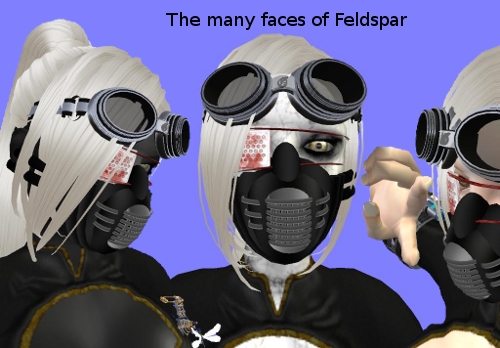
“Virtual Worlds Research: Consumer Behavior in Virtual Worldsâ€Â
Vol. 1. No. 2Â ISSN: 1941-8477Â November 2008
Symbolic and Experiential Consumption of Body in Virtual Worlds: from (Dis)Embodiment to Symembodiment
This experiment focused on the corporeal body (real, physical or atomic embodiment), and the virtual body (digital, non-corporeal embodiment), also called an avatar in some digital environments. Each embodiment can be for social and self-presentation as a part of communication, and as a project, for creating experiences by altering one’s appearance and living new lifestyles associated with that appearance.
Prior to this research being undertaken, there were two primary competing views regarding virtual embodiment:
- Disembodiment – the user is able to break away from their corporeal embodiment, into a virtual embodiment.
- Embodiment is essential, even in virtual worlds, to whatever degree it can be achieved.
This research team has concluded that the embodiment/disembodiment debate is non-resolvable and futile. Instead, they introduce the concept of symembodiment: that is, that an avatar is a symbolic embodiment but not a physical embodiment. There is always a partial degree of embodiment.
The body in modern, Western, society has more meaning placed on it than perhaps at any time in the past, because it is easier to modify the body, successfully and safely, than it has ever been. Body image – creating and maintaining a “perfect” look – is paramount. On the flip side, disease and disability are much harder to cope with in this modern age - because there are so many treatments available for common ailments now, anyone with a visible issue is seen not have care about their body image, or the social and moral implications of their perceived “choice”. Thus, while for some people the body can be seen as a “project”, to be worked on and altered, other people tend to view their bodies as hindrances – they have greater constraints on how much their bodies can be altered, and on the type of experiences they can have through their bodies.
The researchers contend that an avatar, as a body that is as much a representation of self as the corporeal body, can be an end that the user playfully engages in for its own sake – modifying the avatar becomes an experience in and of itself.
Their research questions included the following:
- How do consumers attach meanings to the digital self images they create?
- How are these images constructed and reconstructed?
- How and what do consumers experience through their virtual bodies?
Avatar: the body in the virtual world
The mind and previous bodily concepts of the user greatly influence the types of virtual bodies they inhabit. With virtual bodies, it is common to have at least two, if not many more, symbolic bodies.
Second Life
Second Life tends to support the use of multiple selves. Once the skill of avatar alteration is learnt, it becomes a very quick and simple process to change between virtual bodies. Second Life also supports using avatar alteration as a form of play or experience – avatars are very malleable, and have fewer constraints to alteration than our physical bodies.
Methodology
- The researchers entered Second Life as users.
- They fully participated in Second Life culture and conducted participant observations.
- They found participants by using their own personal networks.
- They conducted both online, in-world interviews and offline, atomic-world interviews.
Questions asked during interviews focused on the participants’ feelings and motives about their lives in Second Life, how they went about creating and recreating their avatars (virtual bodies), and what sort of experiences the participants had with their avatars.
Findings
The researchers felt that users were highly involved in Second Life due to the ability to alter and experience the alteration of the avatar, and due to the freedom afforded in such alterations compared to the corporeal form. They also noted that users create multiple avatars, or at least multiple, vastly differing looks for a single avatar, each of which is derived from a facet of the user’s own concept of self. I wonder to what extent each individual takes on a separate role to go with each representation – do they take on different morals and ethics? Perhaps, less drastically, it is more similar to our representations of ourselves that we use at work and at home – different dress, different speech /language.
In Second Life, a ‘null’ representation – one designed not to draw attention, is just as apt to be interpreted by other users as are more interesting or daring representations. Any representation says something about you to other people.
Some people found there to be excitement associated with the experience of having different bodily features to those in the atomic world. I note that there can also be a sense of normalcy associated with the difference, particularly for those people whose atomic body does not fit their mental concept of self, or for those whose atomic body varies greatly from some desired, unreachable, state.
Discussion
Your representation of yourself in virtual worlds, your avatar, has a great impact on how you communicate with and convey meaning to others. However, the avatar is more than this. In symembodiment, the users playfully construct and engage with their avatars – the user experiences the avatar, and has experiences through it.
“The modern impulse of seeking an ideal life is waning, while the desire to experience multiple alternate lives that allow
extraction of different meanings from life waxes.”
Conclusion
The researchers believe that the virtual body, rather than just being on display for communication purposes, becomes an experience in and of itself.
Speak Your Mind